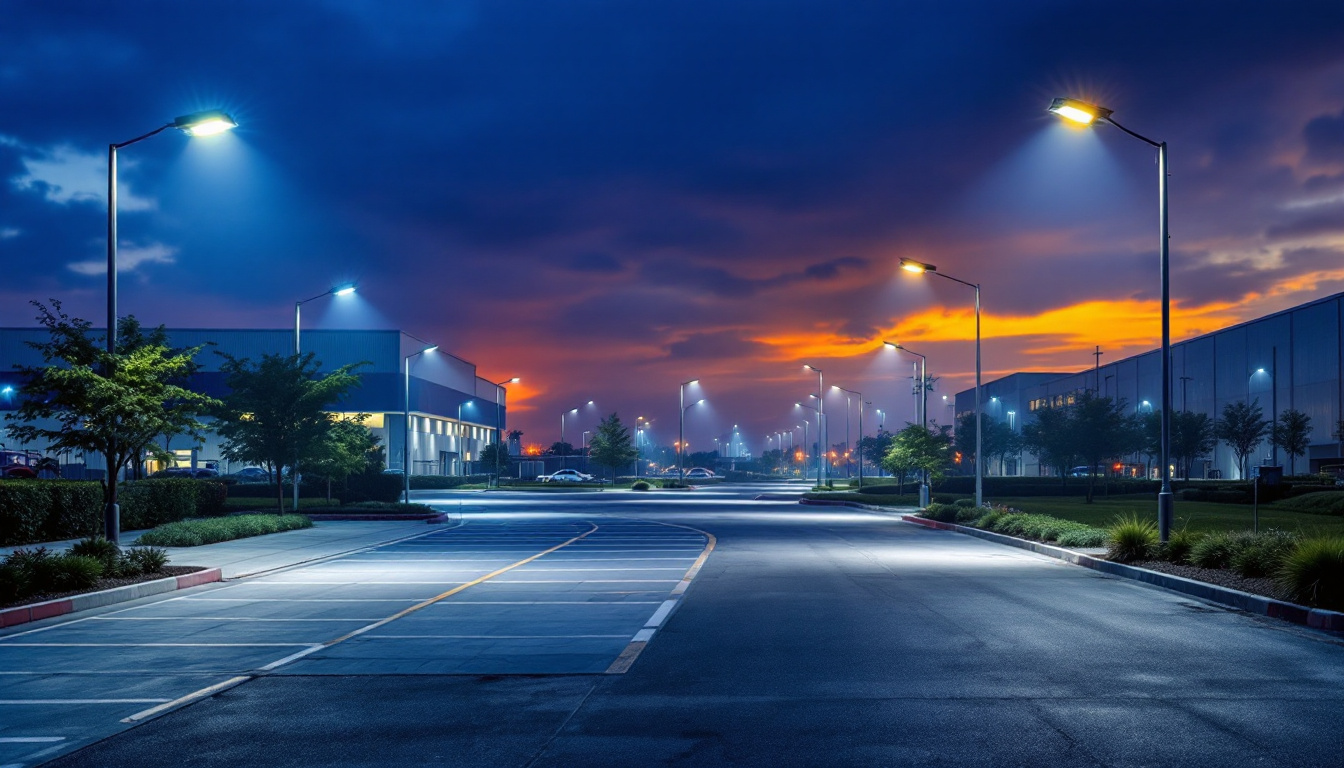
Understanding lumens and their role in site lighting is essential for lighting contractors who aim to deliver optimal solutions for their clients. This article provides a concise overview of lumens, their significance in site lighting, and practical applications that can enhance project outcomes.
Lumens are a unit of measurement that quantifies the amount of light emitted by a source. Unlike watts, which measure energy consumption, lumens focus solely on the visible light output. This distinction is crucial for contractors who must balance energy efficiency with effective illumination. The lumen measurement is particularly important in today’s world, where energy efficiency is a priority. With the rise of LED technology, which offers higher lumen output per watt compared to traditional incandescent bulbs, understanding lumens becomes even more significant in selecting the right lighting solutions.
For lighting contractors, understanding lumens is vital for several reasons. First, it helps in selecting the right fixtures for specific applications. Different environments require varying levels of brightness to ensure safety and functionality. For instance, a workspace may need a higher lumen output to enhance productivity, while a cozy living room may benefit from softer, warmer lighting. By assessing the lumen requirements of a space, contractors can create tailored lighting designs that meet both aesthetic and practical needs.
Second, lumens allow for better communication with clients. When discussing lighting options, using lumens as a reference helps clients understand the brightness they can expect from different fixtures. This clarity can lead to more informed decisions and greater satisfaction with the end result. Furthermore, clients often have specific preferences regarding ambiance and mood, and understanding lumens enables contractors to recommend solutions that align with those desires. By fostering this dialogue, contractors can build trust and rapport with their clients, ultimately leading to successful project outcomes.
Measuring lumens can be straightforward, but it requires an understanding of the tools and methods involved. A light meter is commonly used to measure the luminous output of a fixture. By positioning the meter at a specified distance from the light source, contractors can obtain an accurate reading of lumens. It’s important to note that the distance from the light source can affect the readings, so consistency in measurement practices is key to achieving reliable results.
Additionally, manufacturers often provide lumen output specifications for their products. This information can be found in product datasheets and is essential for comparing different lighting options. Understanding these specifications allows contractors to make informed choices that align with project requirements. Moreover, as lighting technology evolves, staying updated on the latest advancements in lumen output and efficiency can empower contractors to offer innovative solutions that not only meet but exceed client expectations. As the industry shifts towards more sustainable practices, embracing the significance of lumens will play a pivotal role in shaping the future of lighting design.
Calculating the number of lumens needed for a site involves several factors, including the size of the area, the type of activities taking place, and the desired level of illumination. A systematic approach can simplify this process.
To determine the required lumens for a specific area, contractors can use the formula: Lumens Required = Area (in square feet) x Footcandle Level. Footcandles measure the amount of light received on a surface, and different tasks have recommended footcandle levels.
For example, a parking lot may require 2 to 5 footcandles, while a pathway might need 1 to 3 footcandles. By multiplying the area by the appropriate footcandle level, contractors can estimate the total lumens needed for effective lighting. It’s also important to consider the specific characteristics of the site, such as the presence of surrounding structures or vegetation that might cast shadows, potentially requiring adjustments to the initial calculations to ensure adequate visibility and safety.
Not all fixtures emit light equally. The efficiency of a lighting fixture, often expressed as lumens per watt, plays a significant role in determining how many fixtures are needed to achieve the desired lumen output. Contractors should consider this efficiency when planning a lighting layout.
For instance, if a contractor determines that 10,000 lumens are required for a project and the chosen fixture produces 1,000 lumens per unit, then 10 fixtures would be necessary. However, if a more efficient fixture produces 1,500 lumens, only about 7 fixtures would be needed. This efficiency not only saves on installation costs but also reduces energy consumption, leading to long-term savings for clients. Additionally, selecting fixtures with longer lifespans and lower maintenance requirements can further enhance the overall cost-effectiveness of the lighting solution, providing clients with peace of mind and reducing the frequency of replacements or repairs.
Moreover, it’s essential to keep in mind the color temperature of the lighting, which can significantly affect the ambiance and functionality of the space. Warmer color temperatures (around 2700K to 3000K) tend to create a cozy atmosphere, ideal for residential areas, while cooler temperatures (4000K to 5000K) are often preferred for commercial or industrial settings, as they promote alertness and visibility. By carefully selecting both the lumen output and the color temperature, contractors can create a well-illuminated environment that enhances safety and usability while also aligning with the aesthetic goals of the project.
Different types of site lighting serve various purposes and have distinct lumen requirements. Understanding these differences is crucial for contractors to provide tailored solutions that meet client needs.
Outdoor area lighting, such as parking lots and recreational areas, typically requires higher lumen outputs to ensure safety and visibility. For example, a parking lot may need between 2,000 to 4,000 lumens per fixture, depending on the layout and the level of activity.
Contractors should also consider the placement of fixtures to minimize shadows and ensure uniform illumination across the area. This may involve strategic positioning and the use of multiple fixtures to achieve the desired lighting effect.
Pathway and landscape lighting generally require lower lumen outputs, often ranging from 100 to 300 lumens per fixture. The goal in these applications is to provide enough light for safe navigation while creating an inviting atmosphere.
When designing pathway lighting, contractors should focus on spacing fixtures to avoid dark spots. Additionally, using fixtures with adjustable brightness can enhance flexibility, allowing for changes based on seasonal needs or special events.
Implementing best practices when considering lumens in site lighting projects can significantly enhance the overall effectiveness and efficiency of the lighting design.
Before beginning a project, conducting a lighting audit can provide valuable insights into existing conditions. This process involves assessing current lighting levels, identifying areas of improvement, and determining the specific lumen requirements for the new design.
By understanding the current lighting situation, contractors can make informed decisions about fixture selection and placement, ensuring that the new design meets both safety and aesthetic goals.
Incorporating smart lighting solutions can enhance the effectiveness of site lighting. These systems allow for automated adjustments based on ambient light levels, occupancy, and time of day. By optimizing lumen output in real-time, contractors can improve energy efficiency and reduce operational costs.
Smart lighting can also provide added benefits, such as remote monitoring and control, which can be particularly useful for large sites. This technology enables contractors to make adjustments without needing to be physically present, streamlining maintenance and management tasks.
While understanding lumens is crucial, contractors may face challenges in managing lumen output effectively. Addressing these challenges proactively can lead to better project outcomes.
One common challenge is over-illumination, which occurs when excessive light is used in a space. This can lead to glare, increased energy costs, and even discomfort for users. Contractors should strive to find the right balance between adequate lighting and over-illumination to create a comfortable environment.
Utilizing tools such as photometric analysis can assist contractors in visualizing how different lighting scenarios will affect a space. This analysis can help identify potential issues before installation, allowing for adjustments to be made in the design phase.
Another important consideration is compliance with local regulations and industry standards. Many jurisdictions have specific requirements regarding illumination levels for various applications, especially in commercial and public spaces. Contractors must familiarize themselves with these regulations to ensure that their designs meet legal requirements.
Staying updated on industry standards, such as those set by the Illuminating Engineering Society (IES), can also guide contractors in making informed decisions about lumen levels and lighting design. This knowledge not only ensures compliance but also enhances the contractor’s reputation as a knowledgeable professional in the field.
In summary, understanding lumens is essential for lighting contractors who want to deliver effective and efficient site lighting solutions. By grasping the concept of lumens, calculating requirements accurately, and considering best practices, contractors can enhance their project outcomes significantly.
As the lighting industry continues to evolve, staying informed about advancements in technology and regulations will be crucial. By embracing these insights, contractors can provide clients with exceptional lighting solutions that meet both their functional and aesthetic needs.
Ready to elevate your lighting projects with the best in spec-grade lighting products? Look no further than LumenWholesale, where we provide contractors with superior lighting solutions at unbeatable wholesale prices. Say goodbye to local distributor markups and hello to our extensive selection that meets the highest industry standards. With LumenWholesale, you’ll enjoy the convenience of free shipping on bulk orders, ensuring you get premium lighting at the best value — without hidden fees. Make the smart choice for your site lighting needs and experience the perfect blend of quality, affordability, and convenience today.

Discover how the round pendant lamp can transform lighting installations into profitable ventures.

Illuminate your projects with confidence! Discover expert advice and innovative tips tailored for lighting contractors in our comprehensive guide to exterior lamps.

Discover the ultimate guide for lighting contractors seeking reliable LED strip suppliers.

Discover the essential benefits of lockable plugs for lighting contractors.